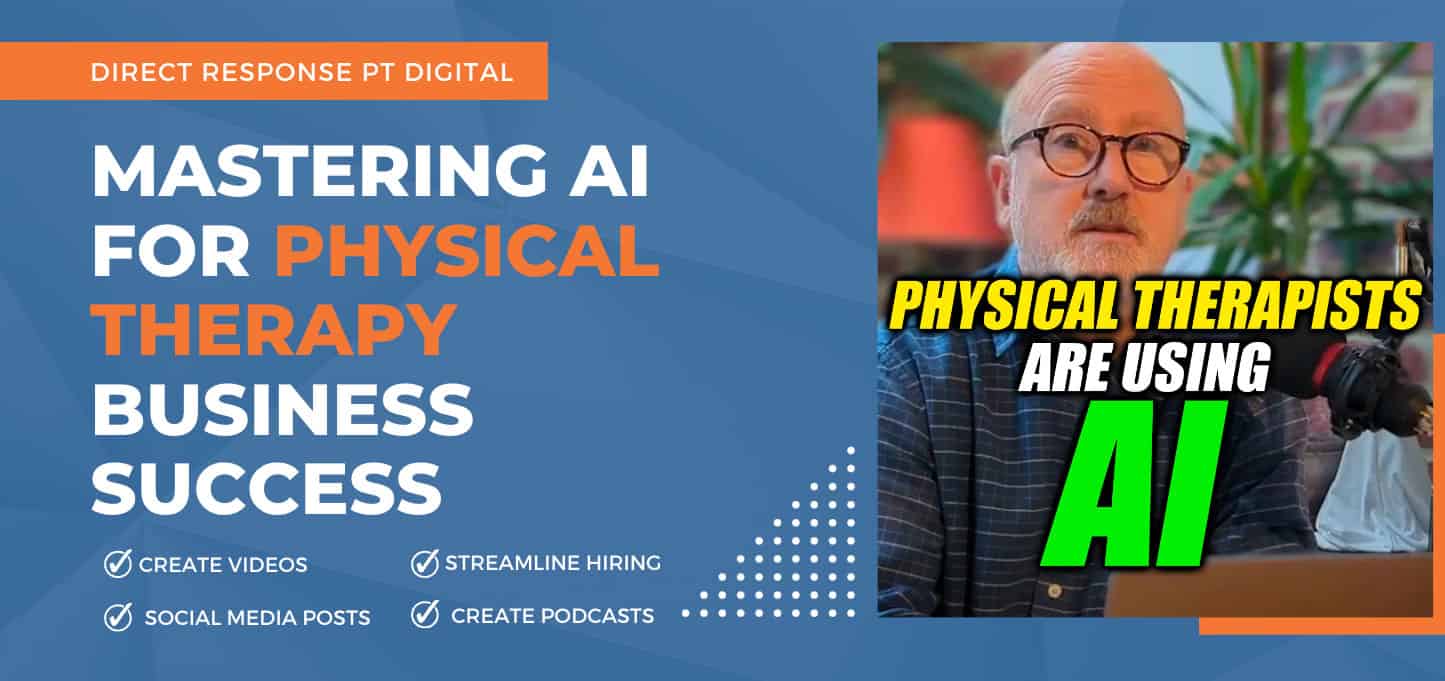Artificial Intelligence (AI) has emerged as a powerful tool, transforming the way physical therapy practices undertake their marketing and engage with patients.
For beginners and intermediate users, integrating AI into your practice might seem daunting, but it’s a lot more approachable than you might think.
Here’s a guide to help you get started.
1. Understanding the Basics: Firstly, it’s essential to understand what AI is and how it can be applied in a physical therapy context.
AI involves using computer systems to perform tasks that typically require human intelligence, such as understanding natural language, recognizing patterns, and making decisions.
In physical therapy, this could range from automating administrative tasks to providing personalized patient care plans.
2. Identifying the Right Tools: There are various AI tools and applications relevant to physical therapy. These include AI-powered software for patient management, chatbots for customer service, and data analysis tools for patient treatment outcomes.
Choose tools that align with your practice’s needs and the areas you wish to improve or streamline.
3. Starting with Small Steps: Begin by implementing AI in small, manageable areas. A good starting point could be using a chatbot on your website to handle basic patient inquiries or an AI tool for scheduling appointments. This gradual approach helps in understanding the technology without overwhelming your existing processes.
4. Training and Resources: Invest time in learning about AI and training your staff. Many AI tool providers offer training sessions and resources. Utilizing these resources will help you and your team become more comfortable and proficient with the technology.
5. Patient Engagement and Personalization: AI can be used to enhance patient engagement. Tools that analyze patient data can help in creating personalized treatment plans or recommending specific exercises. This not only improves patient care but also boosts their satisfaction and loyalty.
6. Measuring Success: Once you’ve implemented AI, it’s important to track its impact. Monitor metrics such as patient satisfaction, appointment management efficiency, and any cost savings. This data will help you understand the effectiveness of AI in your practice and guide future implementations.
7. Staying Informed and Adapting: The field of AI is constantly evolving. Stay informed about the latest developments and be prepared to adapt your strategies. Networking with other physical therapy professionals who are using AI can provide valuable insights and best practices.
Conclusion: Implementing AI in your physical therapy practice doesn’t have to be complicated.
With the right approach and tools, even beginners can leverage AI to enhance their practice efficiency, patient care, and overall business success.
Start small, learn continuously, and watch your practice transform with the power of AI.
Still not sure how to get started? My new course is perfect for you! 👇
It features 6 pre-recorded video modules plus assessments…









